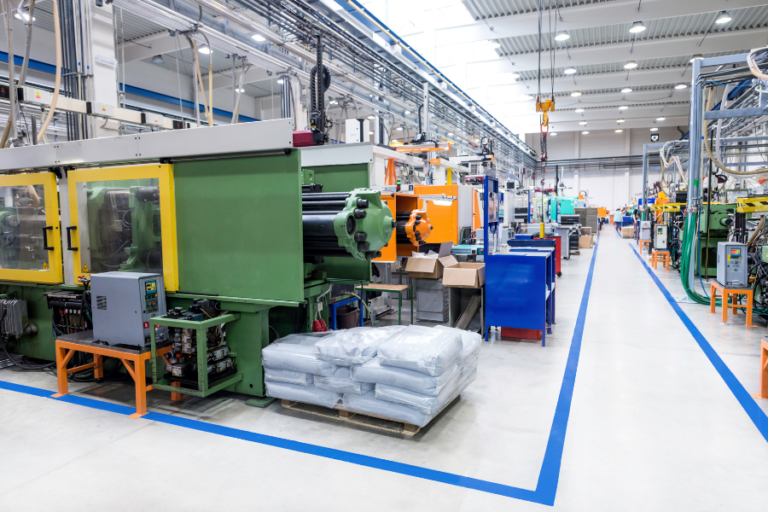Understanding Industrial Building Classifications
Peeling back the layers of industrial architecture reveals a complex world, defined by functionality, purpose, and design. ‘Understanding Industrial Building Classifications’ is our latest exploration into this fascinating realm, brought to you by the experts at Valenti Construction, a commercial construction firm in Birmingham.
Understanding Industrial Building Classifications
In the world of commercial real estate, understanding the nuances of industrial building classifications is paramount for investors, developers, and tenants alike. These classifications help to categorize and differentiate industrial properties based on their design, use, location, and overall quality. This categorization assists in evaluating the suitability, value, and potential use of a property. In this article, we’ll delve into the main industrial building classifications to help you make informed decisions.
Introduction to Industrial Building Classifications
Typically, industrial buildings are classified as Class A, Class B, or Class C. This tiered system is a general guideline, and while there’s a broad consensus on its criteria, some specifications may vary regionally. Let’s break down each category:
Class A Industrial Buildings
These are the crème de la crème of industrial properties:
- Location: They are often located in prime industrial districts, with easy access to major transportation hubs like highways, ports, railroads, and airports.
- Design & Build: They feature modern architectural designs and are equipped with the latest technology. This often means high ceilings (typically 30 feet or higher) that allow for advanced storage solutions, sophisticated fire protection systems, and efficient loading areas.
- Infrastructure: They often offer multiple dock-high doors, large truck courts, and expansive parking areas.
- Condition: These buildings are either brand new or have been recently renovated.
- Use: Suitable for a variety of purposes, including distribution centers, e-commerce hubs, and light manufacturing.
Class B Industrial Buildings
Class B properties are a step down from Class A in terms of features and location:
- Location: While they might still be conveniently located relative to transport routes, they might not be in the most prime areas.
- Design & Build: Typically, these buildings have ceiling heights between 20 to 30 feet. They may not feature the latest architectural designs, but they are functional and efficient.
- Infrastructure: They might have fewer dock doors and loading docks than Class A buildings and might not support the heaviest of industrial equipment.
- Condition: These might be older properties but are generally well-maintained.
- Use: They are versatile and can be used for local distribution, light assembly, and service-related industries.
Class C Industrial Buildings
These are the oldest and typically the least sophisticated in terms of amenities:
- Location: Often found in older industrial districts or outskirts of urban areas, they might not have easy access to major transport routes.
- Design & Build: Generally, they have low ceilings (below 20 feet) and an outdated design.
- Infrastructure: Loading facilities might be limited or even non-existent in some cases.
- Condition: They often show signs of significant wear and tear and might need substantial repairs.
- Use: Given their limitations, they are best suited for storage, light assembly, or small-scale manufacturing.
Why Does Classification Matter?
Understanding the classification of an industrial building is pivotal for a variety of reasons. Firstly, valuation is significantly influenced by these classifications; Class A buildings, with their unparalleled amenities and prime locations, typically command the highest rents and boast the most impressive resale values. This precedence is followed by Class B structures and then Class C. In terms of usage, the efficiency of business operations is largely contingent on a building’s features and its strategic placement. For instance, an e-commerce distribution center is optimally located in a Class A building, primarily due to its proximity to essential transportation hubs. From an investment perspective, it’s imperative for investors to gauge the potential return on investment tied to these classifications. While Class A properties might promise consistent and lucrative returns owing to their esteemed tenants, Class B and C buildings can usher in unique investment opportunities. These might include strategies aimed at enhancing the property’s value, such as refurbishments or even extensive redevelopment.
Contact Valenti Construction
As with all classifications in real estate, these are general guidelines. Always consider local market conditions, specific property features, and your individual needs or objectives when evaluating an industrial property. But with a solid understanding of these classifications, you are better equipped to navigate the industrial real estate landscape, whether you’re looking to invest, lease, or repurpose a property.
Ready to transform your vision into a structural masterpiece? Choose Valenti Construction, where innovation meets impeccable craftsmanship. Let’s build the future, together. Contact us today!







